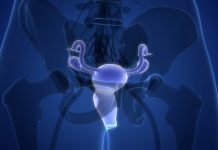New research looks at cancer cases in the UK, revealing complex factors driving progress and challenges
Despite a significant rise in cancer cases over the past 25 years, particularly among middle-aged individuals, there’s been a remarkable decline in cancer-related deaths.
A study conducted by Cancer Research UK (CRUK) in collaboration with experts from the University of Leeds, University College London, and Public Health Scotland looked into data from 1993, providing insights into cancer incidence and mortality trends.
Growing cancer rates but less morality
The findings, published in the British Medical Journal, the research highlight a substantial surge in cancer diagnoses among middle-aged individuals, with a 57% increase among men and a 48% increase among women.
This upward trend is primarily down to rising cases of prostate and breast cancer, the most prevalent cancers among men and women. While improved screening programs have played a crucial role in detecting these cancers at earlier stages and facilitating prompt treatment, lifestyle factors such as obesity, alcohol consumption, and sun exposure are identified as significant contributors to the rise.
However, among the concerning escalation in cancer cases, there’s a glimmer of hope. The study reveals a decline in cancer-related mortality rates among middle-aged individuals, with a 37% decrease in men and a 33% decrease in women over the same 25-year period.
This decline, put down to advancements in screening techniques, treatment modalities, and a decline in smoking rates, underscores the effectiveness of concerted efforts in combating the disease.
Why are cancer rates rising?
Reductions in mortality rates are observed across various cancer types. For example, cervical cancer mortality among women witnessed a decline of 54.3%, attributed to the widespread uptake of the HPV vaccine and improved screening measures.
Lung cancer mortality rates decreased by 53.2% in men and 20.7% in women, reflective of diminishing smoking prevalence.
The positive impact of early detection is also evident in breast and bowel cancer mortality rates, where screening initiatives have facilitated timely interventions.
Certain cancer types, including liver, melanoma, oral, and kidney cancers, have exhibited worrying annual increases, signalling the need for targeted interventions.
Lifestyle factors, particularly obesity, alcohol consumption, and sun exposure, continue to fuel the rise in these cases, emphasising the imperative for comprehensive public health strategies.











